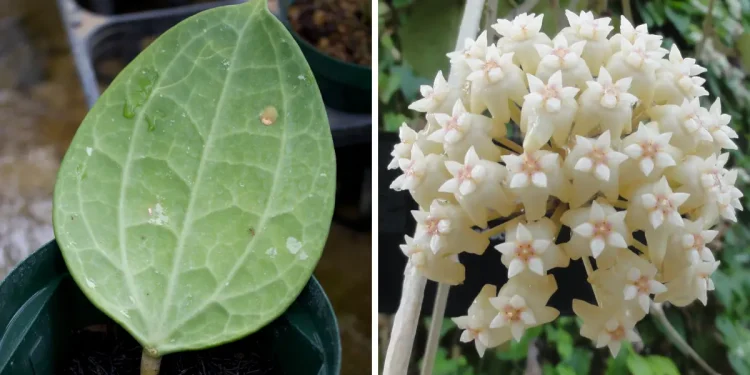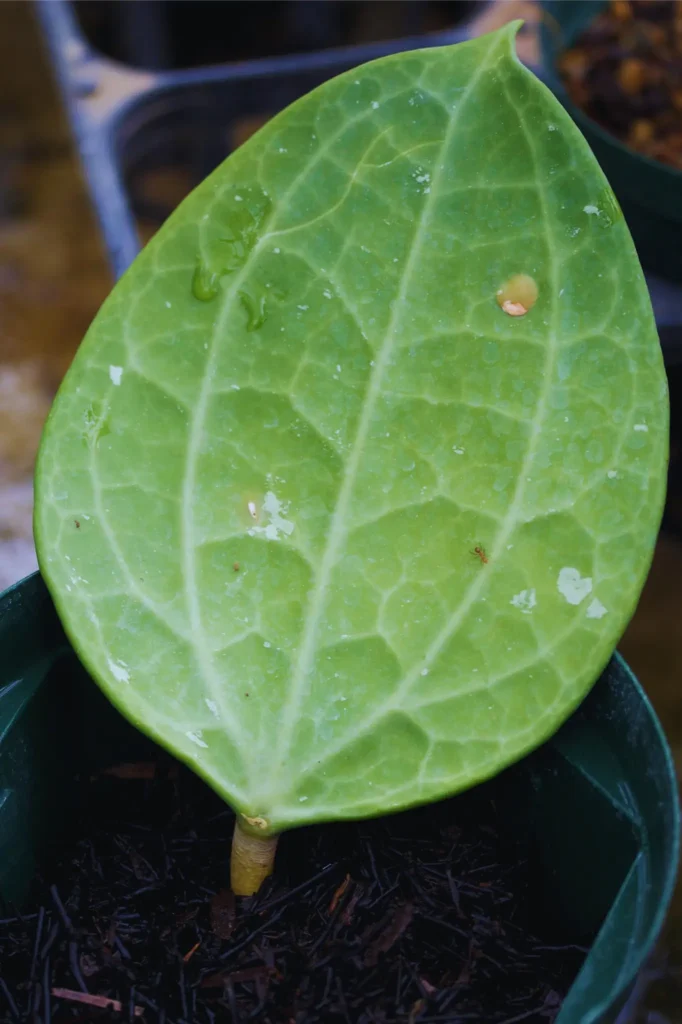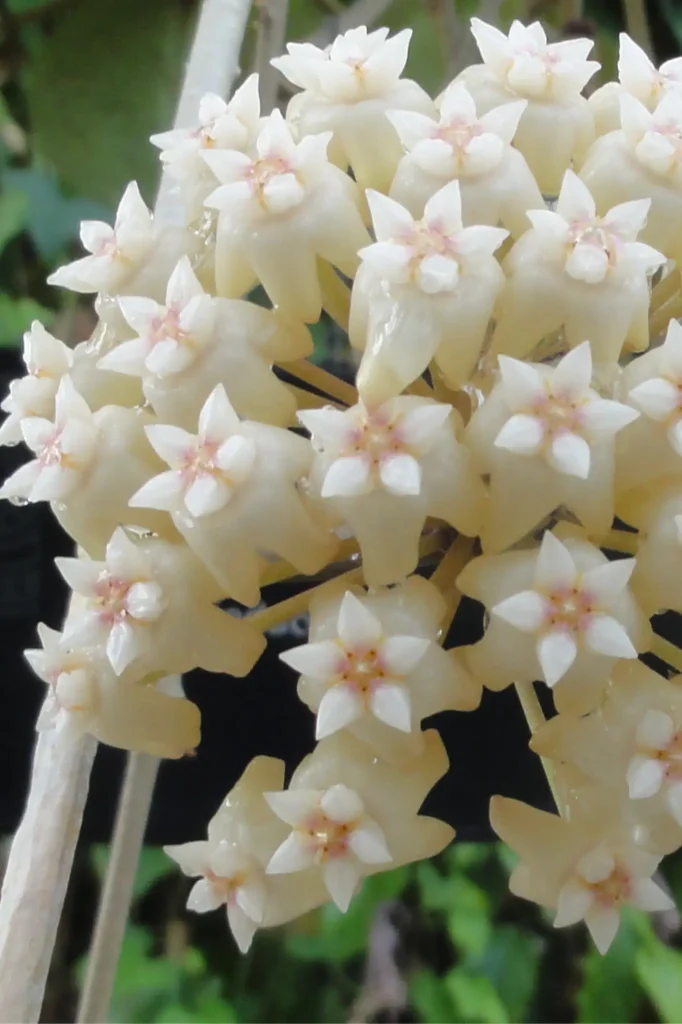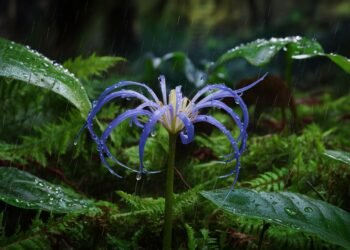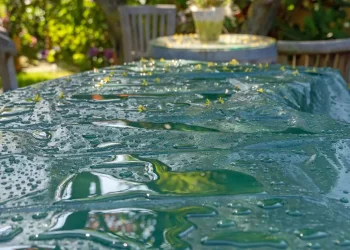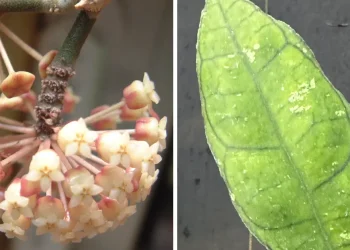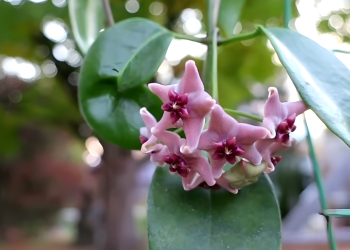You really love Monsteras but want a plant that can flower as well? Hoya Latifolia might be the one!
Hoya Latifolia is commonly known as dinner plate hoya because the leaves get so big and round that they resemble a plate you can eat off of. The leaves also come with prominent white veins and can turn slightly red when exposed to sunlight. And if you care for it right, it will bring you beautiful, large clusters of up to 50 yellow flowers with a sweet scent.
I know this one will look just stunning in your living room! Keep on reading to find out how to care for this one!
Hoya Latifolia Profile
From the hot climates of Singapore, Hoya Latifolia is a climber with such big leaves that it earned the nickname “dinner plate hoya.” The leaves can measure up to 10 inches (25 centimeters) in length and grow very thick, resilient to all kinds of external influences.
In its native habitat, this Hoya variety grows upwards on large trees in a search for light. Although the light remains filtered through large canopies. Inspired by its origin, you don’t want to give it too much of direct sunlight—semi-shade is optimal.
When around two years of age, you can expect Hoya Latifolia to produce huge clusters of light pink and white flowers that, on closer inspection, are star-shaped.
How to Care for Hoya Latifolia
Light
For Hoya Latifolia to thrive, ensure it basks in bright, indirect light for at least 4 hours a day. Although it can tolerate temporary low light conditions, prolonged exposure may lead to weakened growth and increased susceptibility to diseases. This also means, as H. Latifolia is quite big, that you have to rotate the container from time to time so all the parts of the plant get light equally.
I’d recommend a quarter-turn every week or two for optimal growth. You can even connect it with your watering habit.
Soil Requirements
Latifolia loves nearly natural or slightly acidic soils. But optimal pH is not everything—this Hoya variety flourishes in well-draining soil with high aeration, crucial to preventing root rot. A mix incorporating peat, orchid bark, and perlite or vermiculite ensures optimal conditions.
Even a cactus mix could work very well.
The Perfect Temperature
Take into account that H. Latifolia is a tropical plant, and as such, it prefers a warm, moist environment.
During the warmer months of the year, you can consider moving it outdoors for as long as the temperatures are above 60°F (15°C).
When growing indoors, the container shouldn’t stay near radiators or near doors if a draft is an issue in your household.
Watering
Establish a consistent watering routine for Hoya Latifolia, allowing the soil to dry out between waterings.
During the warmer seasons, ensure thorough saturation, allowing water to drain from the pot’s drainage holes. As fall and winter approach, anticipate a dormant phase, reducing the watering frequency in response to the slowed growth and activity of the plant.
Fertilizing
Hoyas, including Latifolia, are undemanding when it comes to nutrients. Consider a half-strength potassium-based fertilizer during the active growing season.
As the plant enters its dormant phase in fall and winter, scale back on fertilizing to align with its natural slowdown in growth.
Repotting and Propagation
You can easily expand your H. Latifolia collection from stem cuttings. From my experience they root very well during just a few days. You can start a cutting whenever during the growth season, from spring to summer.
During growth season, preferably at the very beginning of spring, it’s also an ideal time to repot your Hoya. Hoya Latifolia is a fast grower compared to other Hoyas from the family. But even though it keeps a quite shallow root system, reducing the need for frequent repotting. It will probably need repotting every 2-3 years.

